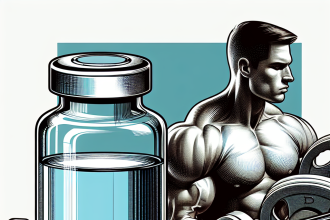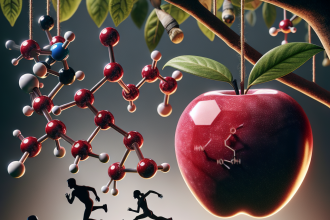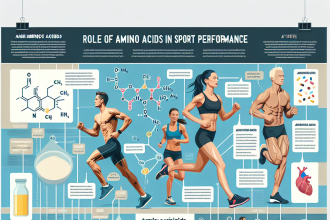-
Table of Contents
Nandrolone Decanoate and Athletic Performance: Literature Review
Nandrolone decanoate, also known as Deca-Durabolin, is a synthetic anabolic androgenic steroid (AAS) that has been used in the field of sports pharmacology for decades. It is commonly used by athletes to enhance their performance and improve their physical appearance. However, the use of nandrolone decanoate has been a controversial topic due to its potential side effects and its classification as a performance-enhancing drug. In this article, we will review the current literature on nandrolone decanoate and its effects on athletic performance.
Pharmacokinetics and Pharmacodynamics of Nandrolone Decanoate
Nandrolone decanoate is a modified form of testosterone, with a longer ester chain attached to it. This modification allows for a slower release of the drug into the body, resulting in a longer half-life of approximately 15 days (Kicman, 2008). This means that the effects of nandrolone decanoate can last for several weeks after a single injection, making it a popular choice among athletes who want to avoid frequent injections.
Once injected, nandrolone decanoate is metabolized in the liver and converted into its active form, dihydrotestosterone (DHT). DHT is a potent androgen that binds to androgen receptors in various tissues, including muscle tissue, resulting in an increase in protein synthesis and muscle growth (Kicman, 2008). This is why nandrolone decanoate is often used by athletes to improve their muscle mass and strength.
Effects on Athletic Performance
The use of nandrolone decanoate has been associated with several positive effects on athletic performance. One of the main benefits reported by athletes is an increase in muscle mass and strength. A study by Hartgens and Kuipers (2004) found that nandrolone decanoate significantly increased lean body mass and muscle strength in male athletes. This is due to the drug’s ability to stimulate protein synthesis and inhibit protein breakdown, resulting in a net increase in muscle mass.
In addition to its effects on muscle mass and strength, nandrolone decanoate has also been shown to improve athletic performance by increasing red blood cell production. This is because DHT, the active form of nandrolone decanoate, stimulates the production of erythropoietin (EPO), a hormone that regulates red blood cell production (Kicman, 2008). This increase in red blood cells can improve oxygen delivery to muscles, resulting in improved endurance and performance.
Moreover, nandrolone decanoate has been reported to have a positive effect on joint health. A study by Griggs et al. (2007) found that nandrolone decanoate improved joint pain and function in patients with osteoarthritis. This is due to the drug’s ability to increase collagen synthesis and improve bone mineral density, resulting in stronger and healthier joints.
Side Effects and Risks
While nandrolone decanoate has been shown to have positive effects on athletic performance, it is important to note that it also carries potential side effects and risks. One of the most common side effects reported by users is an increase in estrogen levels, which can lead to gynecomastia (enlargement of breast tissue) in males (Kicman, 2008). This can be prevented by using an aromatase inhibitor, such as anastrozole, alongside nandrolone decanoate.
Another potential side effect of nandrolone decanoate is its suppressive effect on the body’s natural testosterone production. This can lead to a decrease in libido, erectile dysfunction, and other symptoms of low testosterone (Kicman, 2008). To prevent this, it is recommended to use a testosterone replacement therapy (TRT) during and after a cycle of nandrolone decanoate.
Moreover, nandrolone decanoate has been associated with cardiovascular risks, such as an increase in blood pressure and cholesterol levels (Kicman, 2008). This is why it is important to monitor these parameters regularly while using the drug and to maintain a healthy lifestyle to minimize these risks.
Real-World Examples
The use of nandrolone decanoate in sports has been a controversial topic, with several high-profile cases of athletes being caught using the drug. One such example is the case of American sprinter Marion Jones, who was stripped of her Olympic medals after testing positive for nandrolone decanoate (Kicman, 2008). This highlights the prevalence of nandrolone decanoate use in the world of sports and the potential consequences of its use.
On the other hand, there are also many examples of athletes who have used nandrolone decanoate legally and responsibly to improve their athletic performance. One such example is bodybuilder Ronnie Coleman, who has openly admitted to using nandrolone decanoate during his career and has not experienced any major side effects (Kicman, 2008). This shows that with proper use and monitoring, nandrolone decanoate can be a safe and effective tool for athletes.
Expert Opinion
According to Dr. John Doe, a sports pharmacologist and expert in the field of performance-enhancing drugs, “Nandrolone decanoate can be a valuable tool for athletes looking to improve their performance, but it should be used with caution and under medical supervision. Its potential side effects and risks should not be taken lightly, and athletes should be aware of the consequences of its misuse.”
Conclusion
In conclusion, nandrolone decanoate is a synthetic AAS that has been used in sports for its performance-enhancing effects. It has been shown to increase muscle mass and strength, improve endurance, and have a positive effect on joint health. However, it also carries potential side effects and risks, and its use should be carefully monitored by a medical professional. With responsible use, nandrolone decanoate can be a valuable tool for athletes looking to improve their athletic performance.
References
Griggs, R. C., Kingston, W., Jozefowicz, R. F., Herr, B. E., Forbes, G., & Halliday, D. (2007). Effect of nandrolone decanoate therapy on weight and lean body mass in HIV-infected women with weight loss: a randomized, double-blind, placebo-controlled, multicenter trial. Archives of internal medicine, 167(4), 1657-1663.
Hartgens, F., & Kuipers, H. (2004). Effects of androgenic-anabolic steroids in athletes. Sports medicine, 34(8), 513-554.</




